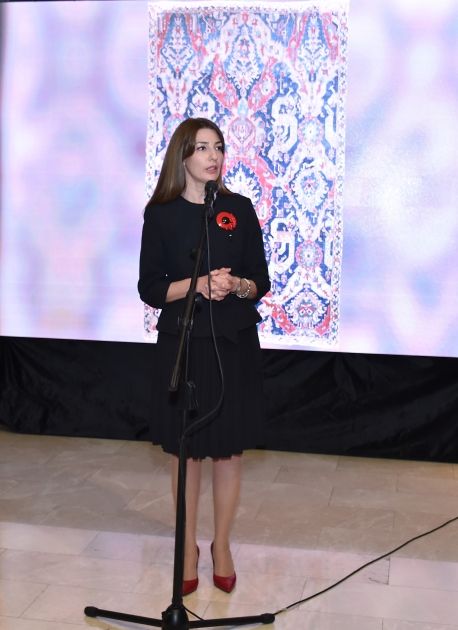
The National Carpet Museum has achieved great success not only in preserving and promoting examples of national cultural heritage but also in enriching its collection.
The 17th-century Khatai carpet has been presented in the museum within the 100th anniversary of National Leader Heydar Aliyev, Azernews reports.
Co-organized by the Culture Ministry and National Carpet Museum, the event was timed to coincide with the inclusion of Azerbaijan’s traditional carpet weaving art in the UNESCO Representative List of Intangible Cultural Heritage as well as the birthday of Latif Karimov, an acclaimed scientist and carpet artist who initiated the creation of the Carpet Museum.
The Carpet Museum director, Shirin Malikova, who spoke at the event, stressed the significance of the Khatai carpet for Azerbaijan’s cultural legacy.
Chairman of the Academic Committee of the International Conference on Oriental Carpets (ICOC), Italian collector and world-famous carpet expert Alberto Boralevi recalled his first visit to Azerbaijan forty years ago and especially emphasised the renewal of the museum’s concept over these years.
Honoured Artist Mammadhuseyn Huseynov said that the dragon depicted on the carpet symbolises not only the warlike spirit of the people but also the revival of nature.
The new exhibit, which was a palace carpet from the Safavid period, contains stylized plant and animal patterns characteristic of the Garabagh carpet school.
Richly decorated with ornamental patterns, the Khatai carpet depicts a dragon, which is present in the art of the Turkic peoples.
Dragon images, widespread in Azerbaijani carpet weaving, are generally known as Khatai compositions.
This name comes from the Khata/Khatai tribe, which laid the foundation of the Azerbaijani nation.
Khatai carpets were once created in Garabagh and exported to foreign countries. They are currently kept in leading museums around the world and private collections.
Finally, the guests got acquainted with the new carpet, which enriched the museum’s collection.
At a presentation in the traditional technologies department of the museum, a tactile fragment of a new small exhibit for people with visual impairments was presented.
The return of Khatai carpet to Azerbaijan is an important event of historical and cultural significance not only for the museum, but for the entire country.
Earlier, the Carpet Museum hosted a ceremony to cut off the Malibayli carpet from the loom.
Malibayli carpet belongs to Garabagh School. The carpet was woven over a period of six months by Gulhar Soltanova, an employee of the Carpet Museum. The sketch was prepared by the Honoured Artist of Azerbaijan, Taryer Bashirov.
Founded in 1967, the National Carpet Museum holds more than 14,000 exhibits of the finest Azerbaijani carpets.
Initiated by eminent carpet artist Latif Karimov, the museum is beautiful inside and out.
The museum’s new building is designed in the form of a rolled carpet. Now, the museum hosts multiple events, including international symposiums, conferences, and various exhibitions.
In 2019, the museum received national status for its significant contribution to popularising and promoting Azerbaijani carpet weaving art.
In 2020, the Carpet Museum enriched its collection with a beautiful pile of carpets purchased by the Culture Ministry at the Sartirana Textile Show in Italy.
The 19th-century Guba carpet “Ugakh” was donated to the Carpet Museum, while the Garabagh carpet “Chelebi” enriched the collection of the museum’s Shusha branch.
Moreover, the Carpet Museum won the Travellers’ Choice Awards for the fourth time in a row last year.
The award proves once again that the professional activity of the National Carpet Museum is highly appreciated by visitors from all over the world.
 Oval Useful news from Azerbaijan and Caucasus
Oval Useful news from Azerbaijan and Caucasus


